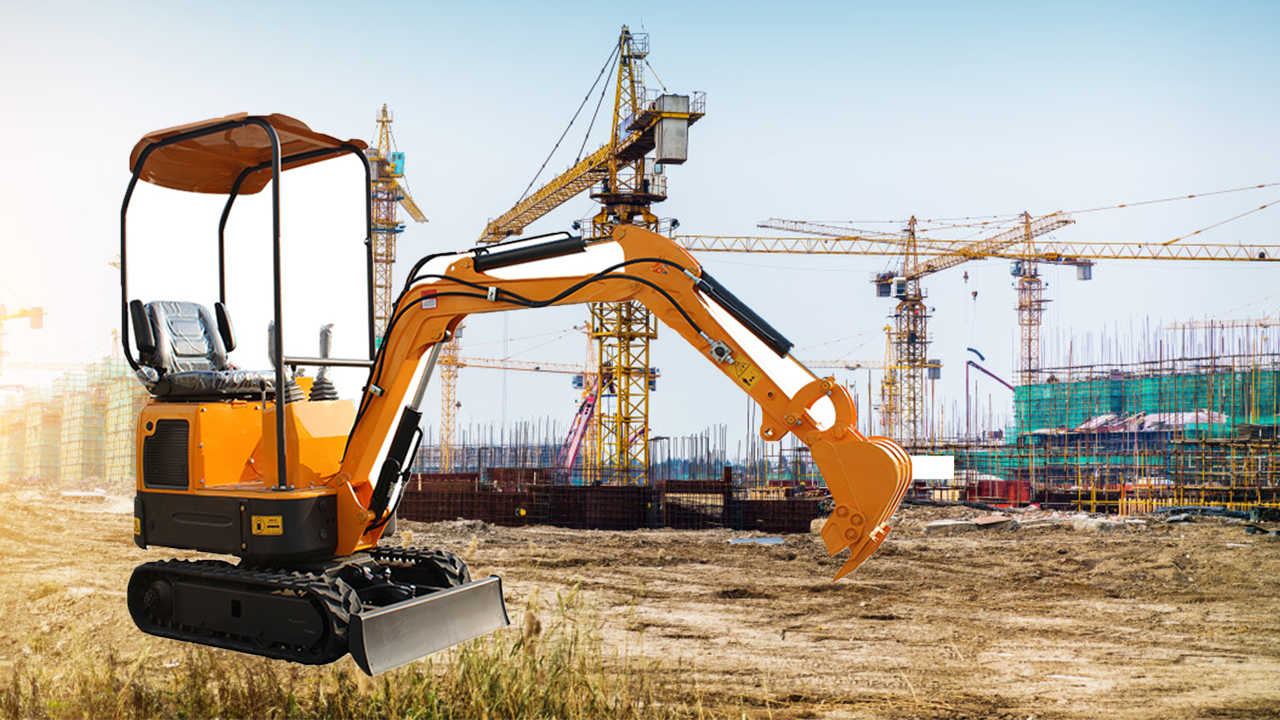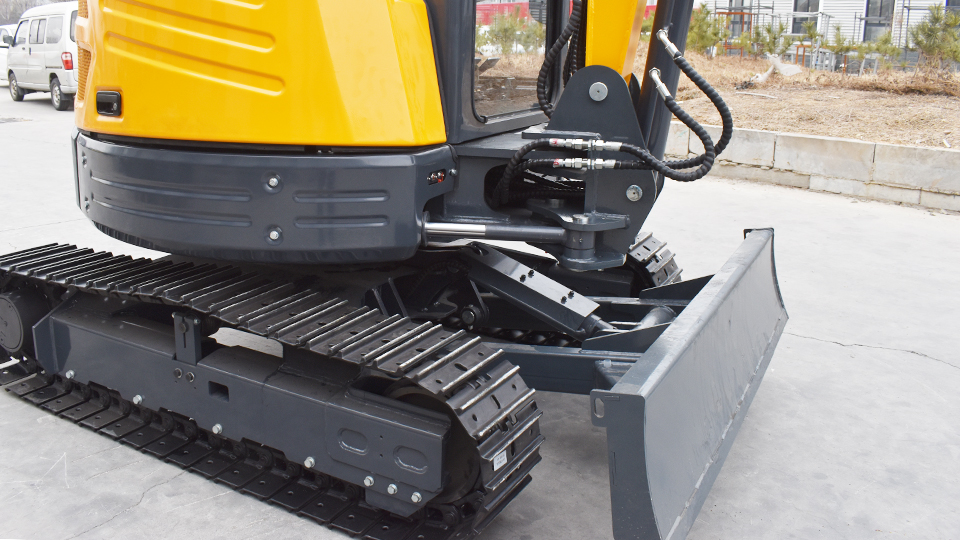Abstract
The acquisition of a new hydraulic excavator is a significant capital investment, with Total Cost of Ownership (TCO) extending far beyond the initial purchase price. For heavy equipment, the quality of after-sales service is often the single most dominant variable influencing uptime, productivity, and long-term financial viability. This technical article analyzes the complex landscape of dealership after-sales support for major excavator brands, focusing on the critical factors that define "best-in-class" service. While definitive, universally applicable rankings are difficult due to the localized nature of dealer networks, a comparative analysis of industry giants—Caterpillar (Cat), Komatsu, **** and Volvo—reveals distinct philosophies in service delivery, encompassing parts logistics, field service capabilities, and advanced telematics integration. The conclusion emphasizes that the ultimate "best" dealership is highly regional, but core manufacturer strategies provide a robust framework for pre-purchase evaluation.
1. The Financial Imperative of After-Sales Service
In the construction and mining sectors, a hydraulic excavator’s efficiency is measured by its availability. Downtime due to maintenance or parts delays can incur exponential costs, including penalties for missed project deadlines and lost labor hours. After-sales service is not a peripheral benefit; it is a core operational requirement structured around four critical pillars:
Uptime Maximization: The ability to service equipment quickly, often on-site, minimizing the period between failure and restoration of operation.
Parts Logistics: The depth of inventory and the speed of the supply chain for both common and specialized components.

Preventive Maintenance (PM) Programs: Structured, scheduled services that prevent failures and adhere to warranty requirements.
Technological Integration: The use of telematics and remote diagnostics to predict failures before they occur.
2. Methodology: Deconstructing "Best-in-Class" Service
A global or national ranking of excavator brands based on service quality is impractical, as the service is delivered by independent or regional dealer groups. A superior dealer in one territory may be contrasted by a subpar one in another, even for the same manufacturer. Therefore, this analysis focuses on the manufacturer's service strategy and dealer network structure—the foundation that dictates the potential for excellent local service.
The evaluation criteria for this analysis are:
Service Factor Technical Metric of Excellence Impact on TCO
Dealer Network Density Number of full-service branches per operating area/capita. Reduces travel time for field service, improving response time (RT).
Parts Availability First-fill rate (the percentage of parts immediately in stock) and guaranteed delivery windows. Directly reduces Mean Time to Repair (MTTR) and minimizes downtime penalty costs.
Field Service Capability Number of mobile service trucks, technician certification levels (e.g., Level III/Master), and availability of 24/7/365 emergency support. Ensures rapid, reliable on-site repairs for non-transportable failures.
Telematics & Diagnostics Integration of remote monitoring (e.g., Cat Product Link, Komatsu KOMTRAX), predictive analytics, and remote flashing/firmware updates. Facilitates proactive intervention, reducing the probability of unplanned downtime.
Service Contract Value Customization and comprehensiveness of maintenance agreements (e.g., Customer Value Agreements). Predicts and stabilizes maintenance expenditure, simplifying budgeting.
导出到 Google 表格
3. Comparative Analysis of Major Excavator Manufacturers
The global excavator market is dominated by a few major players, each with a distinct approach to leveraging their dealer network for a competitive service advantage.
3.1. Caterpillar (Cat): The Network Density and Ecosystem Leader
Caterpillar's primary advantage in after-sales service is its unparalleled, globally recognized independent dealer network. This network is a critical competitive asset, often cited in industry commentary as the benchmark for support infrastructure.
Dealer Structure and Reach: Cat dealers are typically large, well-capitalized, and possess exclusive rights to extensive territories. This scale allows for significant investment in sprawling service facilities, massive parts inventories, and large fleets of specialized field service vehicles.
Parts Logistics: Cat sets the industry standard for parts availability. The global parts distribution system is designed to provide near-perfect first-fill rates. For any non-stock item, the overnight "Emergency Down" program ensures minimal delay, albeit at a premium. This system is robust enough to support high-volume fleets across diverse applications.
Telematics Integration (Product Link): Cat's Product Link telematics system is deeply integrated into the service model. It transmits performance data, fault codes, and fluid analysis results to the dealer's Condition Monitoring (CM) teams. The dealer often performs the first tier of remote troubleshooting, alerting the customer to potential failures before they cause a hard stop.
Service Philosophy: Cat emphasizes a comprehensive, full-service approach. Their Customer Value Agreements (CVAs) often bundle parts, dealer-performed planned maintenance (PM) at fixed intervals, and extended warranties, providing a highly predictable cost structure for the machine's life cycle. This predictability is paramount for high-volume fleet operators.
3.2. Komatsu: The Technology and Fuel-Efficiency Focus
Komatsu's service strategy centers around leveraging technology for proactive maintenance and minimizing the total cost of ownership, often with a greater emphasis on fuel efficiency than the competition.
Dealer Structure and Reach: Komatsu's dealer network, while not as dense as Cat's in every region, is generally robust and competent, particularly in key North American and international markets.
Telematics Integration (KOMTRAX): KOMTRAX is Komatsu's proprietary wireless monitoring system, which has a strong focus on security and remote diagnostics. A key feature is the ability for Komatsu and its dealers to remotely monitor fuel consumption and operational efficiency, offering recommendations to optimize performance and reduce operating costs—a direct service value.
Warranties and PM: Komatsu is renowned for its complimentary maintenance and support programs on new equipment, such as the Komatsu CARE program. This typically covers scheduled maintenance for the first three years or 2,000 hours, including the supply of OEM parts and the cost of dealer technicians performing the service. This upfront guarantee significantly de-risks the first phase of ownership.
Parts Availability: While the parts network is excellent, some users in remote regions occasionally report longer lead times for niche or highly specialized components compared to Cat, largely a function of the comparative scale of the two global supply chains.

3.3. John Deere: The Reliability and Simplification Model
John Deere’s approach to excavator service is characterized by straightforward design, a reliable maintenance history, and a strong dealer network that often overlaps with their established agricultural equipment presence.
Dealer Structure and Reach: John Deere has a long-standing, well-regarded network, particularly in North America. Their dealers often serve both the agricultural and construction sectors, sometimes providing a broader geographical footprint in non-urban, rural areas compared to pure-construction dealers.
Service Philosophy: Deere is frequently associated with reliable, user-friendly designs that simplify field maintenance. Their service model often promotes the concept of competitive maintenance costs—that is, the cost of parts and standard maintenance is kept aggressively competitive.
Diagnostics: While integrating advanced telematics and grade control, John Deere is often praised by fleet mechanics for adhering to design standards that facilitate internal repairs and maintenance procedures, a counter-point to the perceived proprietary complexity of some competitors. The quality of local dealer support in construction-focused services (as opposed to agriculture) is the key local variable.
The Hitachi Factor: In North America, John Deere excavators are often the product of a joint venture with Hitachi, a brand known globally for outstanding hydraulic systems. This synergy benefits the service offering by incorporating reliable core components.
3.4. Volvo Construction Equipment (Volvo CE): The Efficiency and Digital Support Champion
Volvo CE differentiates its service offering with a strong focus on fuel efficiency, operator comfort, and robust digital support tools.
Service and Efficiency: Volvo’s service contracts are heavily focused on maximizing fuel efficiency alongside maintenance. Programs are designed to monitor and optimize operator behavior to ensure the machine is utilized in the most efficient manner possible.
Digital Tools (CareTrack): The CareTrack telematics system provides rich data, which Volvo CE dealers use to tailor their service offering. They are leaders in remote coaching and data-driven recommendations that directly impact operational efficiency, in addition to standard maintenance alerts.
Uptime Commitment: Volvo dealers often offer an Uptime Commitment, guaranteeing that if a critical part is not available within a specific timeframe (e.g., 24-48 hours), the part is provided free of charge, or other compensation is offered. This is a powerful, formalized commitment to minimizing downtime.
Component Reliability: Volvo machines, particularly their swing and hydraulic systems, are known for their quality, which naturally reduces the frequency of unexpected component failures, simplifying the service load on the dealer.
4. The Operator’s Due Diligence: A Pre-Purchase Checklist
Given that local dealer quality supersedes brand strategy, a buyer's "application" process for a new excavator should be rigorous and focused on the local dealership.
4.1. Assess Local Dealer Resources
Inquiry Point Key Questions for the Dealer Technical Requirement
Response Time (RT) What is the guaranteed response time for a critical failure (machine down, safety hazard)? Is this 24/7? Guaranteed Maximum RT ≤4 hours (ideal)
Parts Availability What is your first-fill rate for excavator parts? Where is your main parts depot, and what is the maximum lead time for non-stock items? First-Fill Rate ≥95%
Field Service How many fully-equipped service trucks and certified master technicians do you have covering my operating area? Adequate ratio of Techs:Fleet Size in territory.
Technician Expertise What is the average experience level of your field technicians, and are they trained specifically on the latest engine emissions technology (e.g., Tier 4 Final/Stage V)?Specific certification on current models and complex systems.
4.2. Scrutinize Service Contracts and Telematics
Buyers must move beyond the basic warranty and fully understand the service agreement.
Warranty Terms: Understand the standard warranty (e.g., 1 year/2,000 hours) versus extended coverage options. Which components (e.g., hydraulic pump, travel motors) are covered, and what maintenance practices (e.g., fluid analysis every 250 hours) must be adhered to to keep the warranty valid?
Telematics Handover: Ensure a comprehensive training session on the machine’s telematics system is included. The dealer should demonstrate how they actively monitor the data (e.g., "geofencing alerts," "excessive idle reports") and how the customer can access their data portal.
Guarantees: Seek formalized guarantees, such as Volvo's Uptime Commitment or a written Service Level Agreement (SLA) on parts delivery.
5. Conclusion: The Regional Nature of Superior Service
In the technical landscape of heavy equipment procurement, the "best" after-sales service is a function of the manufacturer's global commitment and the local dealer's execution.
Caterpillar often provides the safest bet for fleet operators demanding unparalleled parts availability and the densest dealer network, backed by a world-class telematics system.
Komatsu stands out for operators focused on predictable maintenance costs and superior technological integration, particularly with the Komatsu CARE program.
John Deere appeals to those prioritizing reliability, competitive long-term service costs, and a dealer presence often strong across diverse geographical regions.
Volvo CE is the optimal choice for companies that heavily leverage data, prioritize fuel efficiency, and value formalized uptime guarantees.
Ultimately, the technical analysis confirms that the single most critical step is the hyper-local assessment of the immediate dealership. Prospective buyers should speak to existing customers of the local dealer, inspect the local parts warehouse, and demand a written Service Level Agreement before any purchase commitment is finalized. The decision on a new excavator is less about the badge on the boom and more about the quality of the service truck driving out to the site.
Post time:Sep-25-2020
